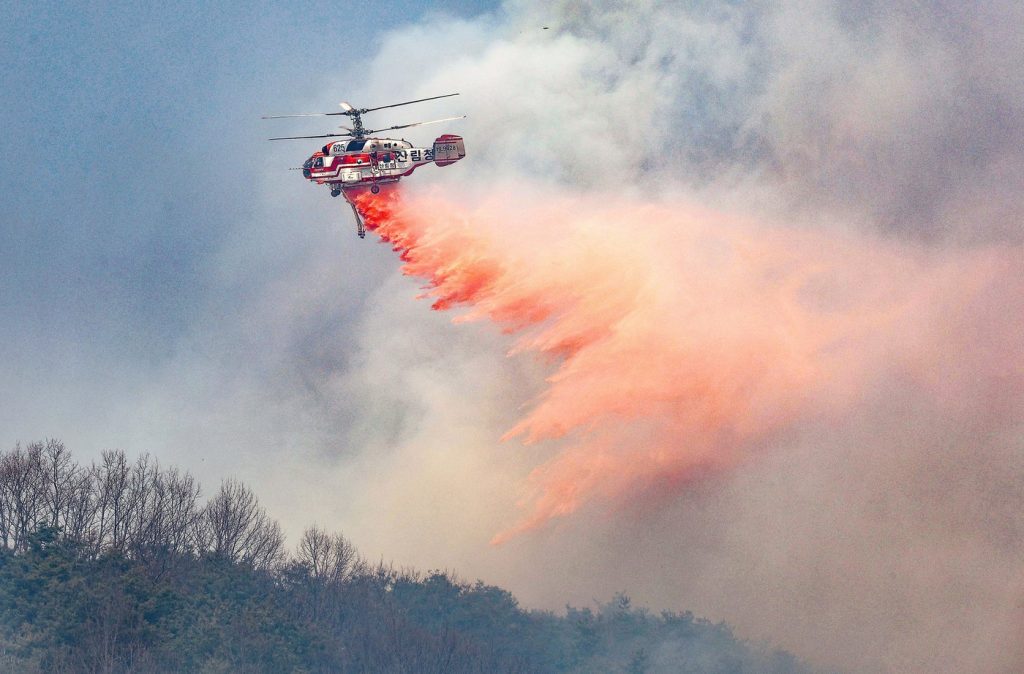SEOUL, South Korea (AP) - South Korean firefighters are making significant progress in containing the largest wildfires in the country's southeastern areas, which have scorched more than 36,300 acres over the past five days. The blazes have been exacerbated by dry winds, leading to a concerted effort from emergency services to combat the flames.
Thousands of firefighters have been mobilized, alongside hundreds of vehicles and over 100 helicopters, to address the wildfires primarily affecting Sancheong County, the neighboring town of Uiseong, and Ulsan City, as reported by the Korea Forest Service. By Tuesday morning, officials indicated that around 90% of the wildfires in both Sancheong and Uiseong, as well as more than half of the fire in Ulsan, had been extinguished. Nonetheless, firefighters are simultaneously tackling several additional wildfires in the southern regions of the country.
Tragically, four firefighters and government personnel lost their lives in Sancheong on Saturday after being trapped by swiftly advancing flames, which were driven by powerful winds. Since Friday, at least 11 other individuals have sustained injuries due to the wildfires. The intense fires have compelled over 5,400 residents to evacuate their homes, resulting in damage to more than 150 buildings, according to the Ministry of the Interior and Safety.
In response to the devastation, the national government has designated the hardest-hit southeastern regions as disaster zones. This designation aims to concentrate resources and expedite recovery efforts in the affected areas. Prime Minister Han Duck-soo, who is currently serving as the acting leader after the impeachment of President Yoon Suk Yeol regarding a December martial law decree, assured utmost efforts to manage the wildfires during a government meeting on Tuesday. He also urged the public to remain vigilant, as the dry spring weather continues to pose a risk.
Government officials suspect that several of the recent wildfires, notably those in Uiseong and Ulsan, may have been ignited due to human error. There are indications that activities such as the use of fire to clear overgrown grass in family tombs or sparks from welding work could have contributed to the onset of these destructive blazes.
This series of wildfires highlights the catastrophic impacts of such environmental conditions and human actions, prompting both immediate firefighting efforts and long-term discussions regarding fire safety and weather-related preparedness in South Korea.










